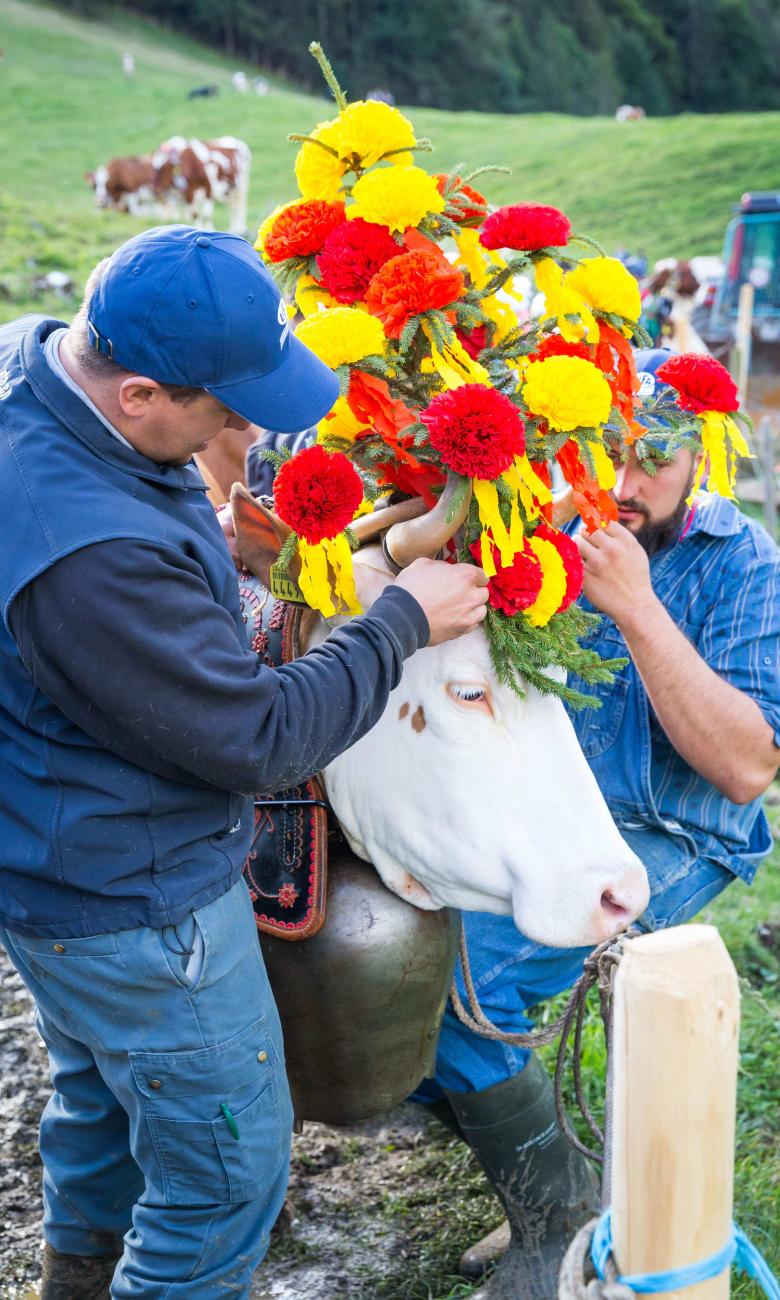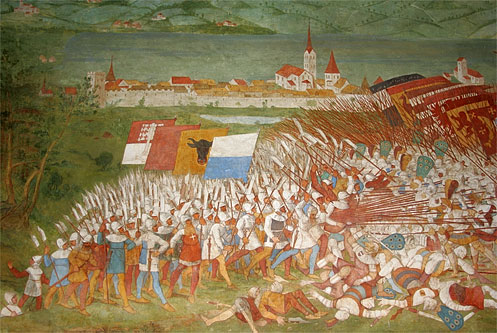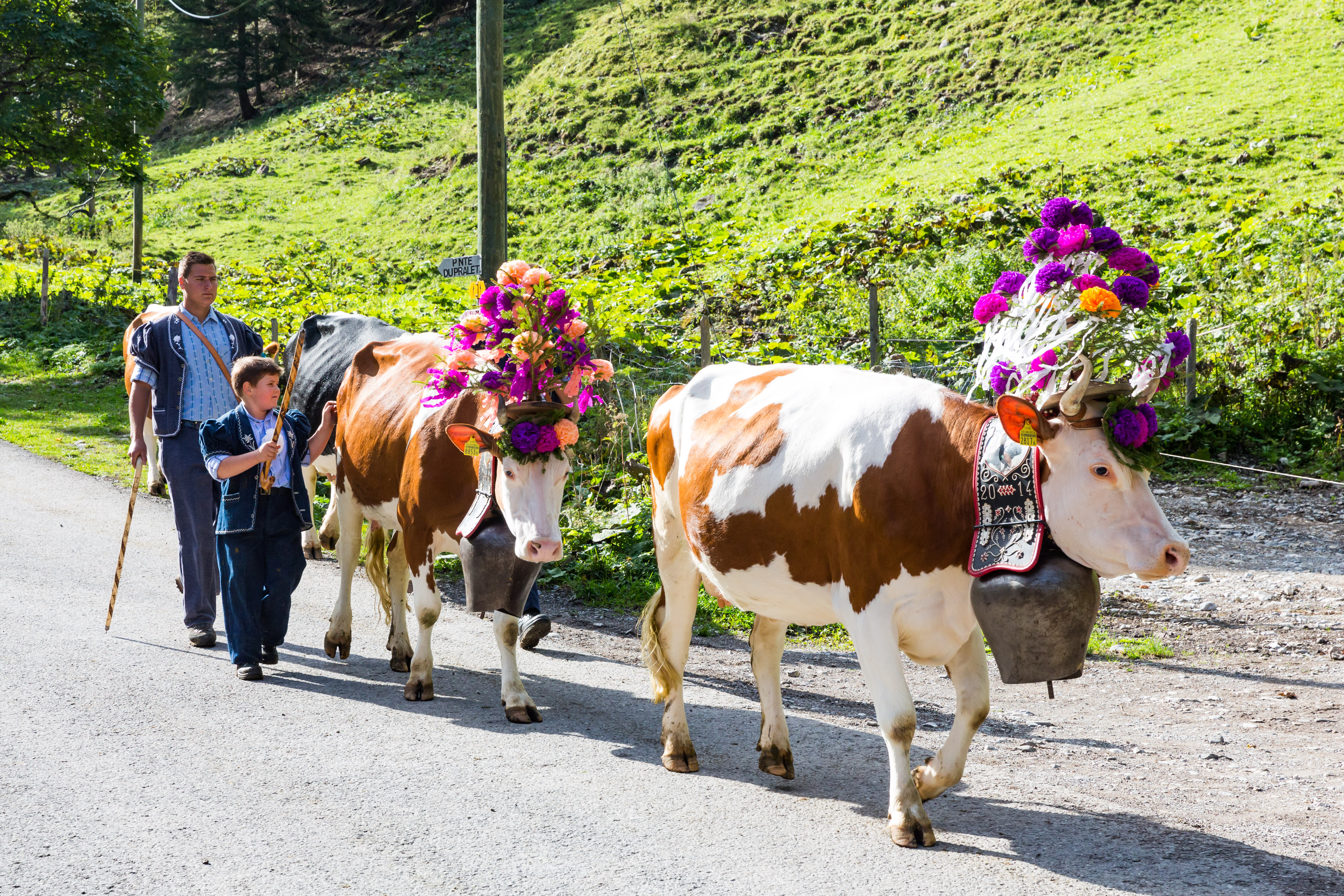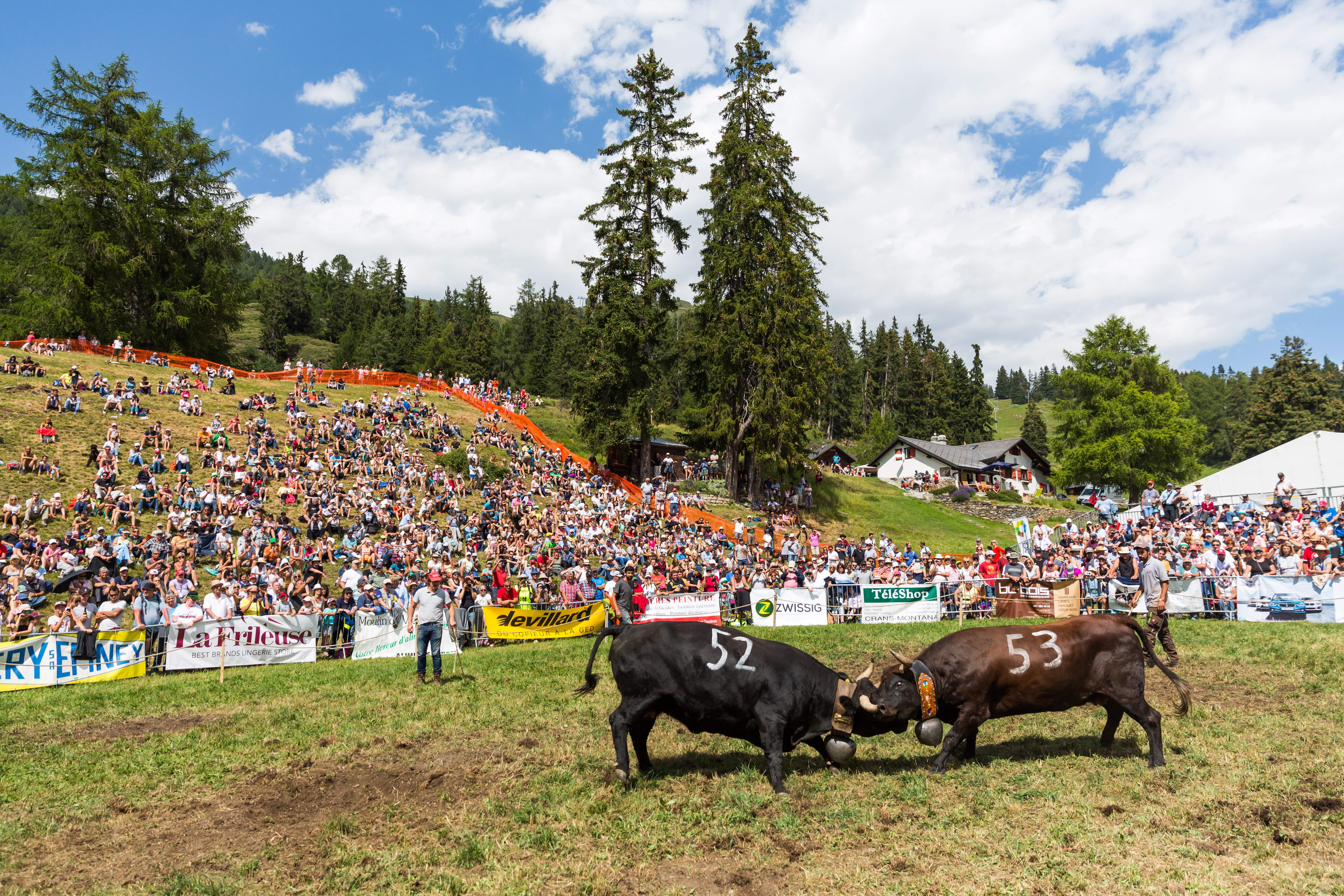Switzerland's iconic cow
Wherever you go in Switzerland, the ubiquitous cow can be seen grazing an idyllic pasture, as a wooden souvenir, or starring in an advertisement. Favourite animal and overseas ambassador, the cow is a symbol of Switzerland. Find out why.
If you ask a Swiss person what animal they associate with Switzerland, the cow is likely to be among the top answers. Whether you earn your living from them or just see them on your way to work, cows belong to everyday life in Switzerland. They are also a fundamental part of our country's heritage for historical, economic, and sentimental reasons.

Historically because...
"If Switzerland had to choose a national animal, the cow would be a strong contender", says Jacqueline Perifanakis. Unlike other countries, Switzerland doesn't officially have a national animal. But if it did, the cow would have to go up against the marmot, the ibex and the St Bernard, as one of the 'big four' featured by the Swiss National Museum Zurich in its 2018 exhibition 'Swiss Bestiary'. In a survey of visitors to the exhibition, the cow came in second. "It’s probably partly because dogs are popular pets and the St Bernard is a breed that originated in Switzerland", adds Perifanakis, who curated the exhibition. "For many Swiss, the sight of a cow evokes a feeling of belonging which is rooted in our history. The cow has historical significance that goes back to the founding of the Swiss Confederation in 1291. In 1386, during the Battle of Sempach, the cow symbolised our fight against the Habsburg lion."

© Roland Zumbühl Fresco: Hans Rudolf Manuel (1525 - 1571), reworked by Hans Ulrich Wägmann (1583 - ca. 1648), Joseph Balmer (1828 - 1918) source
Our historical connection with the cow has sometimes made us the object of mockery. The Swiss were perceived as rich merchants dealing in cattle and cheese, for which they were disparagingly called 'vachers' (cowherds). Then in the 16th and 17th centuries, the term acquired positive connotations with increased reverence for the exemplary lifestyle of the simple herdsman.
Economically because...
Trade in dairy products has turned the cow into a symbol of economic prosperity. Swiss farmers began exporting their dairy products in the 18th century. "Many of the old families made a living and grew prosperous on revenues from their cattle, especially milk, meat and leather products", says Blaise Maître from the cantonal agricultural service in Valais. "Especially in the mountain cantons, where until the dams were built there was little work". Proud communities immortalised the source of their prosperity in local arts and crafts. It is at this time that the cow became associated with the tradition of the Poya, the driving of cattle up to summer alpine pastures, and made its début as a traditional wooden children's toy.

Today, the cow's importance in Swiss agriculture is growing. "Cows are the most important animals. They make up over 50% of all livestock sold", says Matthias Schelling, who chairs the executive committee of the Association of Swiss Cattle Breeders. "The cow is a nice animal to look at, compared with the pig, for example. Cows are appreciated for their gentle appearance as well as the products derived from their milk. If there were no cows, there would be no milk, no cheese, no chocolate."
With the average inhabitant of Switzerland consuming nearly 370kg of dairy products per year, there's no shortage of demand. "In 2017, Swiss milk production amounted to approximately 3.4 million tonnes. Nearly half of that is made into cheese", comments Swissmilk's communications director Reto Burkhardt. "Our habits have changed; we drink less milk but still consume it largely in processed products like cheese and milky beverages". The Swiss milk industry generates over CHF 10 billion in revenue per year. In other words, the cow still has an impact on the Swiss economy.
Because we love them
"The Swiss like cows because many of us have some kind of contact with them. We have a special relationship with them because they evoke childhood memories, of visits to the chalet or mountains", says Maître, himself from the mountain canton of Valais. "Lyoba, a traditional song also called ‘Ranz des Vaches’ that is sung when the cows go up to the mountain pastures and return to the plains at the end of the summer still gives me the same tingle of excitement. So do the cow fights. The ‘combats de reines’, when the Hérens cattle fight to establish a hierarchy within the herd, are always a magnificent spectacle."

For Burkhardt, the cow symbolises Swiss people's roots, traditions and heritage. "Every Swiss family has at least one generation or relative in agriculture, that's why everyone has a connection with cows", he adds. According to Maître, "the cow can evoke values such as hard work, tradition and family, but also the mountains and the beauty of the landscape. In Valais, we say that the character of the local people is like that of the cow".
The cow is also a valued ambassador in tourism and advertising. "If you talk to a foreigner about Switzerland, watches, cheese and chocolate are part of the conversation", claims Burkhardt. The image of the friendly cow is also used for marketing purposes by tourism authorities and brands. Swissmilk's mascot Lovely enjoys a bit of tap dancing, ski jumping and football.
The iconic Swiss cow is an image that appeals as much at home as it does abroad. And given the 700’000 cows currently recorded in our country, it's a relationship that is sure to last, well...until the cows come home.




